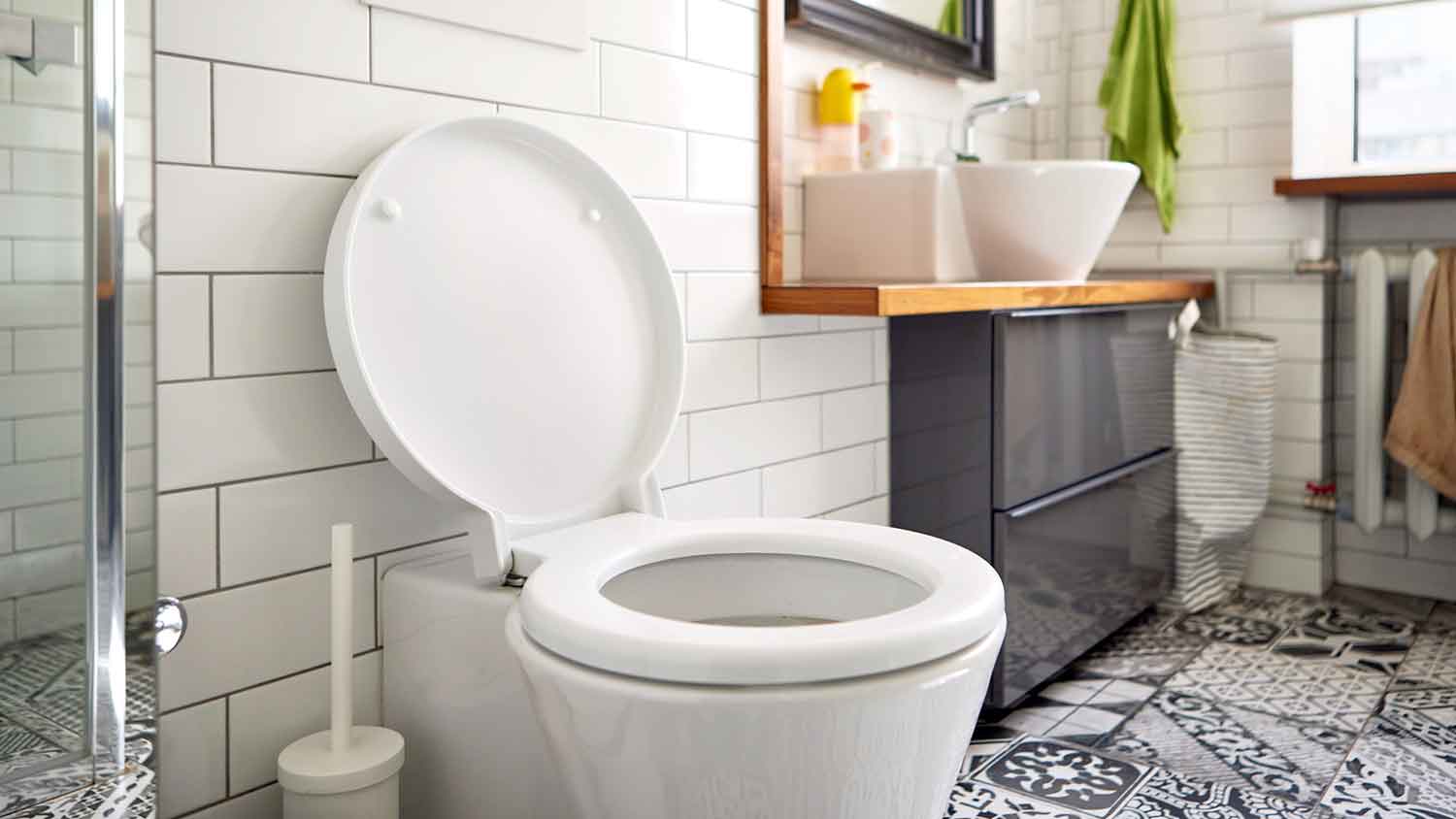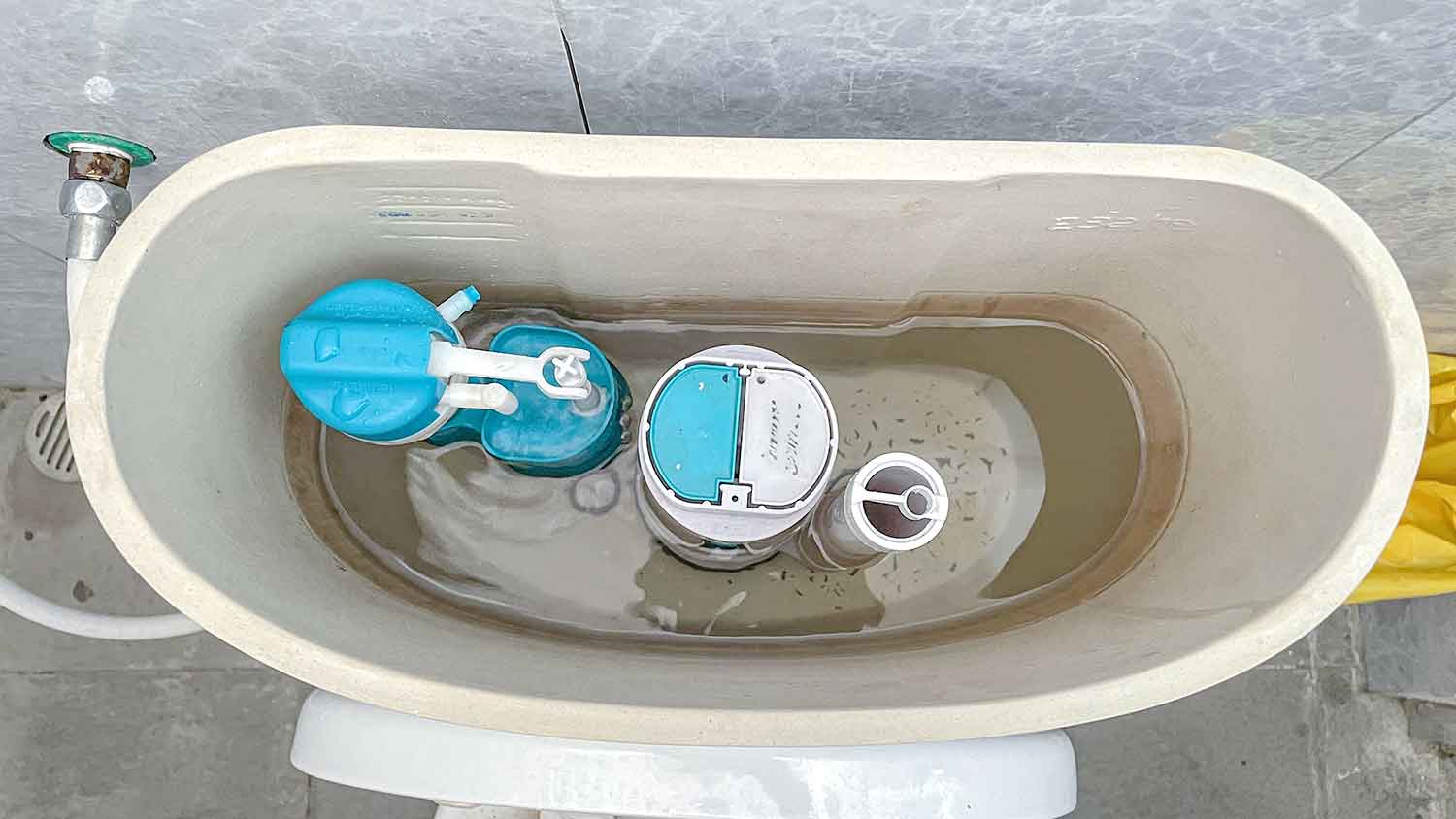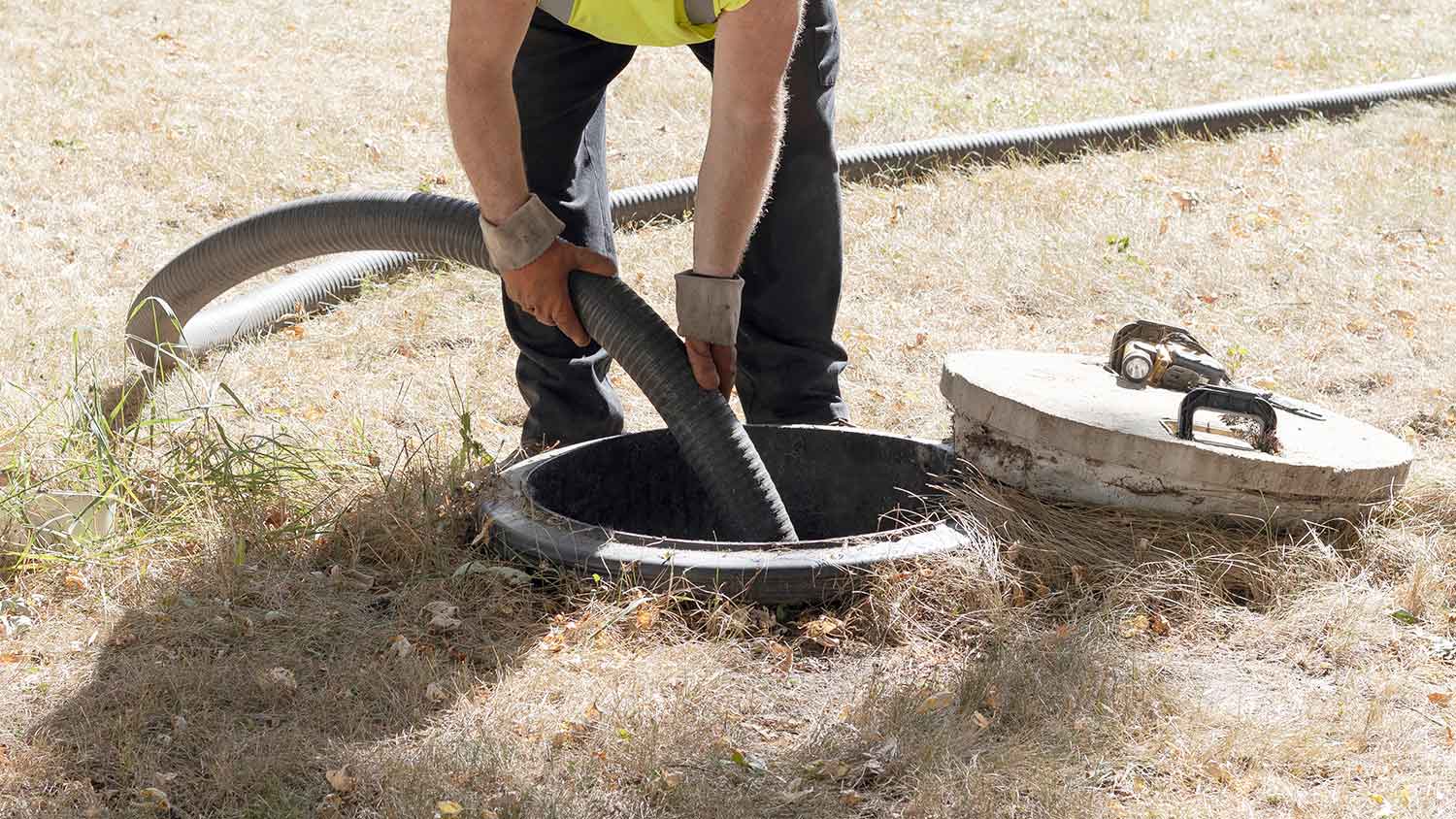Why Is My Toilet Overflowing? These 5 Reasons Might Explain It
Become a toilet detective


There are several possible reasons your toilet is overflowing.
You can fix some of these issues if you’re comfortable with DIY.
If you can’t get the toilet to flush, call a pro.
Having a toilet that keeps overflowing is not only messy, but it’s also stressful each time you flush. If you’re wondering, “Why is my toilet overflowing?” we have some answers—and they may not be what you think. The next time you see the water heading up instead of down, investigate these five common reasons why your toilet is overflowing.
1. Clogged Drain
A clogged drain happens when something from the toilet gets stuck in the S-trap or drain after the toilet is flushed. This is often the result of using too much toilet paper or it could be caused by a small clog that keeps blocking waste and getting bigger and bigger. The drain might also be clogged from someone flushing a non-flushable item, like a toy, a baby wipe, a diaper, or feminine hygiene products.
How to Fix It
When the toilet is overflowing, try clearing the clog with a toilet plunger before anything else. Carefully move the plunger through the water to cover the drain at the bottom of the bowl and firmly move the plunger up and down, maintaining the plunger’s seal. This should dislodge the clog and allow the water to flow freely again. For stubborn clogs, you might need to use a toilet auger or call a local plumber for help. This is especially true if the clog is the result of a toy or other object that could be jammed in the pipe.
2. High Float Ball or Float Cup

The filler float inside the tank looks like a rubber ball or small cup and lifts as the water rises. When it reaches the top of the water line, it tells the fill valve to stop allowing water in. If the filler float is too high, it will allow too much water to flow into the tank, ultimately allowing the toilet to overflow.
How to Fix It
You can adjust the height of the filler float to allow more or less water in, depending on the adjustment. This may take some trial and error to get the right water levels, but it can also stop your toilet from overflowing.
3. Damaged Fill Valve
The fill valve is another component in the toilet tank that is responsible for the amount of water that flows into the bowl. It works with the filler float and shuts the flow of water off when it reaches the desired height. If the fill valve is damaged, it won’t get the signal at the right time and will allow the water to keep on flowing.
How to Fix It
You can replace a toilet fill valve with a new one by removing the old fill valve, adding the rubber washer to the new fill valve, and then installing it in the toilet tank. If this doesn’t fix it or you’re uncomfortable working on your toilet or plumbing, call a toilet repair professional near you.
4. Clogged Plumbing Line or Obstructed Vent Pipe
If more than one toilet in your home is having the same issue, then it might not be the toilet that’s the problem. The issue might be deeper in the home’s plumbing system. A clog somewhere in the home’s plumbing system or even an obstructed vent pipe can cause the toilet to overflow, sometimes for no apparent reason.
How to Fix It
For a clogged plumbing line, you can use a plumbing auger to get further into the pipe and hopefully dislodge the clog. The plumbing stack, or vent pipe, is located on the roof and allows air into the system to create the pressure necessary for flushing a toilet. It can get clogged with leaves, snow, ice, and other debris.
To determine if this is the case, have someone head to the roof—safely, of course—and put their hand over the vent pipe while someone else flushes a toilet. If there is suction at the opening, then you may need to investigate other issues. If there’s no suction, then you can clean and unclog the plumbing vent by using a garden hose with a spray nozzle, allowing water pressure to clear the clog, or use a plumbing auger. A plumber can help with either issue and may be your best bet if you’re not comfortable on the roof or you can’t identify where the clog is.
5. Clogged Sewer Line or Full Septic Tank

Occasionally, an overflowing toilet is the result of an issue outside your home. A clogged sewer line or a full septic tank can block water and waste from their final destination and cause clogged toilets. This is likely to be the case if you’re having the same problem with multiple toilets
How to Fix It
If you suspect that the problem is in the plumbing system rather than in your home, call your utility company if you’re on the city’s system or find out who empties septic tanks in your area and give them a call.
When to Call a Pro
You can often figure out why your toilet is overflowing on your own by paying attention to how much toilet paper is used, asking if anyone has flushed anything down the toilet, and checking the filler float to see if it needs an adjustment. But if none of these things work, it’s time to call a pro and get their insights. Plumbers typically charge by the hour, but they might have a flat rate for certain jobs, like unclogging a drain, so the cost of plumbing repairs will vary.
Frequently Asked Questions
If the toilet is overflowing but there’s no clog, that’s a sign that the issue is deeper in the system, and plunging may not help. A blockage in your home’s plumbing, the plumbing vent, or even city sewer lines can cause toilets to overflow. The issue could also be the toilet itself if the filler float isn’t set to the correct height or if parts are damaged or worn out.
Yes, flushing a clogged toilet can make it overflow. While flushing the toilet may push enough pressure through the system to dislodge the clog, this is unlikely. Your best bet is to use a plunger and hope the suction can break up whatever is blocking the pipe. If this doesn’t work, use a plumbing auger or call a pro to help.





- Gas Plumbers
- Plumbing Repairs
- Sump Pump Installation
- Wood & Pellet Stove Repair
- Shower Repair
- Wood Stove Services
- Emergency Plumbers
- Fire Sprinkler Contractors
- Perc Test Companies
- Toilet Repair & Installation
- Boiler Repair
- Sewer Line Repair
- Faucet Repair
- Main Drain Camera Companies
- Foundation Drain Installation
- French Drains
- Bathtub Replacement
- Subcontractors
- Storm Drain Contractors
- Affordable Plumbing
- Plumbing & Heating Companies
- Bathroom Repair Services
- Sink Installation
- Commercial Plumber
- Barndominium Builders
- Water Line Repair
- Faucet Installation
- Water Line Installation
- Leak Detection










